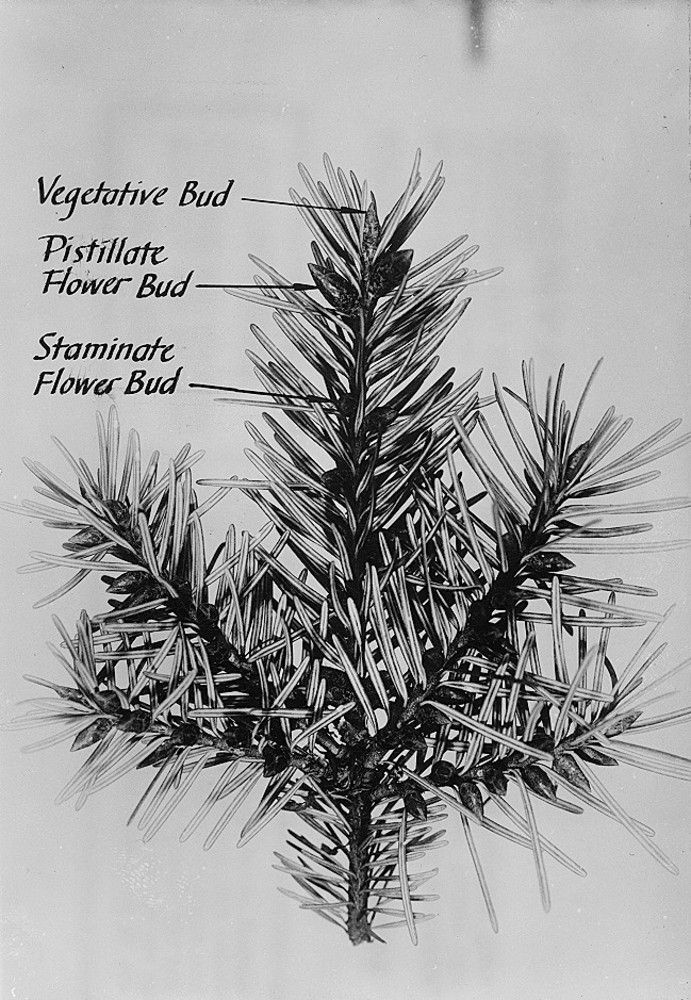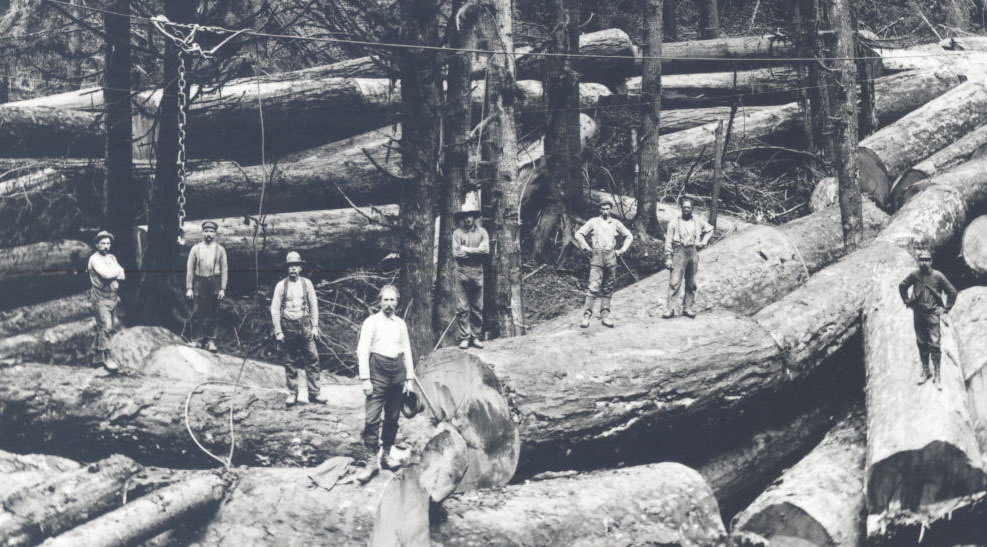The Oregon-American Lumber Company (1917-1934) and its successors—the Oregon-American Lumber Corporation (1934-1953), the Long-Bell Lumber Company (1953-1956), and the International Lumber Company (1956-1957)—operated from the Nehalem Valley town of Vernonia. The company logged approximately 2.5 billion board-feet of timber from its 30,000-acre holdings in Columbia, Clatsop, and Tillamook counties.
O-A’s timber, considered one of the finest old-growth stands of Douglas-fir timber known to modern man, was notable for its uniformity of character and density. The company’s timber was generally 300 to 600 years old. In the era when an average stand of old-growth Douglas-fir held 55,000 board-feet to the acre and an excellent one contained up to 90,000 board-feet, the O-A tract had ten entire sections (a section is 640 acres) that contained or exceeded 100,000 board-feet per acre.
In 1921, Vernonia was an isolated outpost of 150 inhabitants. By 1923 and before the mill sawed its first log, the town’s population soared to over 1,500, making it the fastest growing town in Oregon and one of the chief economic engines of the tri-county region (Columbia, Clatsop, and Tillamook) in terms of employment, as well as in production and sales volume.
While never accounting for more than one percent of the national output of Douglas-fir lumber, O-A and its products stood out for many reasons. The mill was notable for its large manufacturing capacity—350,000 board-feet per eight-hour shift—and all lumber manufactured in the Vernonia plant was kiln-dried.
Previous conventional mill-siting practices of that era located most sawmills along major watercourses. O-A's Vernonia mill, like other huge mills that were springing up elsewhere in the state during the 1920s, differed in that it was an inland mill. This meant that it was served almost entirely by rail for raw material supply and outbound finished-goods shipments.
O-A’s primary markets were in the Midwest farm belt. Freight savings realized from dry-kilning its lumber enabled the company to ship its products to far more distant markets than its green-lumber competitors could afford to do. O-A also forged extensive strategic business relationships with the Great Northern and Northern Pacific railroads, thus expanding its vertical integration from land holdings to distribution points over 1,500 miles to the east.
When O-A removed its last log from the woods on August 27, 1957, the company was the last integrated steam-powered stump-to-boxcar lumbering concern on the West Coast. The mill sawed its last log on September 11, 1957, and shipped the last of its lumber on April 19, 1958. The mill was demolished shortly thereafter, and the company housing development was deeded to the City of Vernonia in 1960.
In 2002, the Oregon-American Company office building was added to the National Register of Historic Buildings. It is now the home of the Vernonia Pioneer Museum.
-
![Oregon-American mill at Vernonia, 1929.]()
O-A Lumber Mill, Vernonia, 1929.
Oregon-American mill at Vernonia, 1929. Oreg. State Univ. Archives, Gerald W. Williams Collec., illiamsG:CR_Vernonia mill
-
![Oregon-American's Filer & Stowell 40' long-side carriage and head rig.]()
O-A Lumber Co, long side carriage.
Oregon-American's Filer & Stowell 40' long-side carriage and head rig. Photo Harold Brown, courtesy Ed Kamholz
-
![Oregon-American's 52" Wickes gang saw with log cant in foreground.]()
O-A Lumber Co, gang.
Oregon-American's 52" Wickes gang saw with log cant in foreground. Photo Harold Brown, courtesy Ed Kamholz
-
![Lumber contents of a Douglas-fir log.]()
O-A Lumber Co, Douglas-fir log contents.
Lumber contents of a Douglas-fir log. University of Oregon Special Collections, Greenman Collection
-
![Oregon-American mill at Vernonia, 1927.]()
O-A Lumber Co., 1927.
Oregon-American mill at Vernonia, 1927. Photo Harold Brown, courtesy Ed Kamholz
-
![O-A Lumber employees, late 1930s]()
O-A Lumber employees, late 1930s.
O-A Lumber employees, late 1930s Courtesy Oreg. Hist. Soc. Research Lib., orhi87251
Related Entries
-
![Douglas-fir]()
Douglas-fir
Douglas-fir (Pseudotsuga menziesii), perhaps the most common tree in Or…
-
![Timber Industry]()
Timber Industry
Since the 1880s, long before the mythical Paul Bunyan roamed the Northw…
-
![Vernonia]()
Vernonia
Vernonia lies in the upper Nehalem Valley of northwestern Oregon. With …
Related Historical Records
Map This on the Oregon History WayFinder
The Oregon History Wayfinder is an interactive map that identifies significant places, people, and events in Oregon history.
Further Reading
Kamholz, Edward J., Jim Blain, and Gregory Kamholz. The Oregon-American Lumber Company: Ain’t No More. Palo Alto, Calif.: Stanford University Press, 2003.









